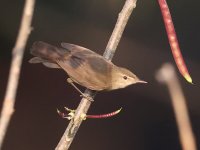Jayan Thomas
Member

Hello all , please help me id this warbler from Kannur , Kerala, India. The picture was taken in the second week of February 2024. I think it is a Booted Warbler.
Jayan Thomas.
Jayan Thomas.








